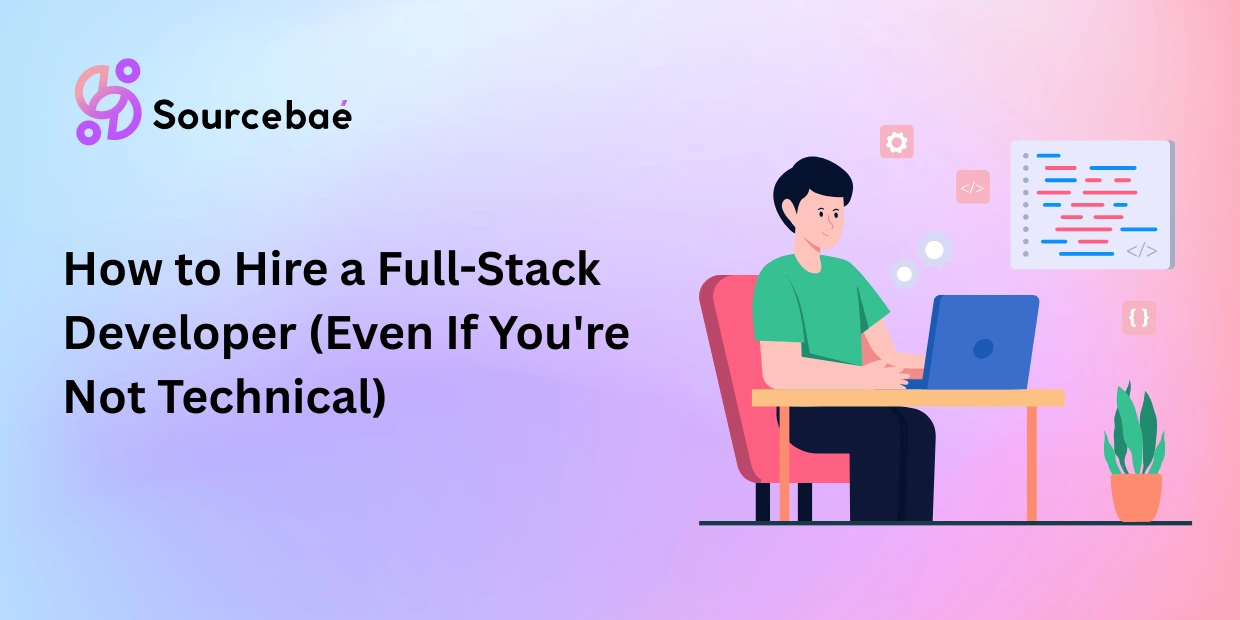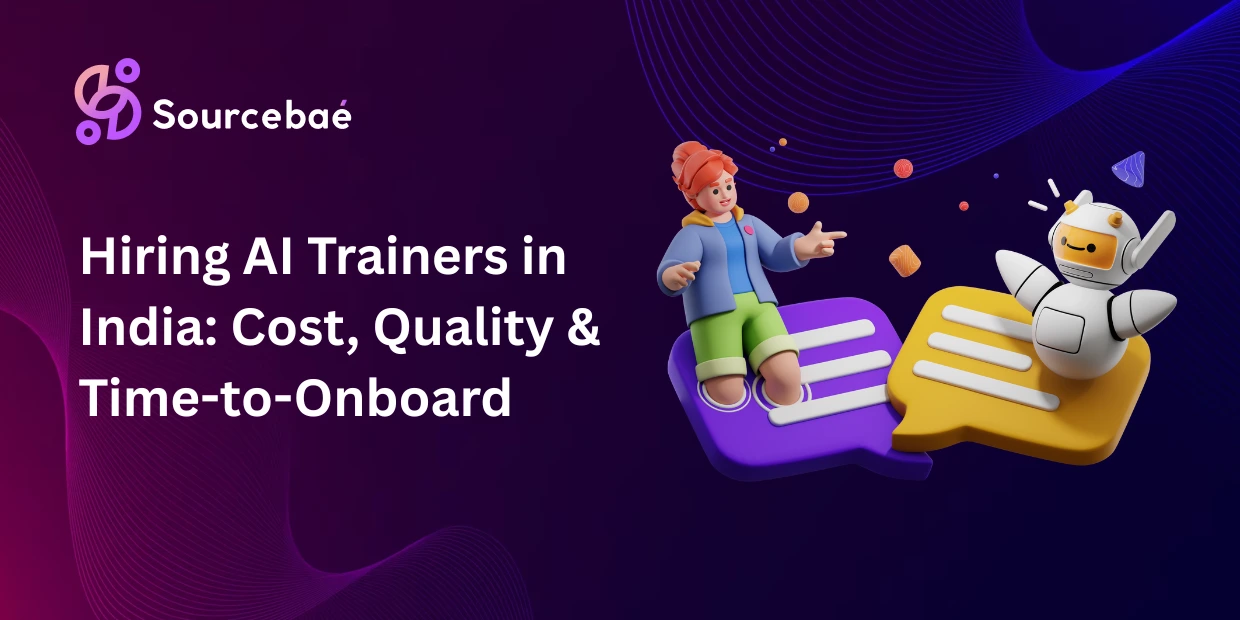The demand for full-stack developers has skyrocketed, with a projected 22% growth in software developer roles expected in the coming years. Yet for non-technical founders and hiring managers, the process of hiring full stack developers can feel overwhelming. How do you evaluate coding skills when you can’t code? How do you spot red flags in technical interviews? This comprehensive guide will walk you through every step of hiring a full stack developer, even if you have zero technical background.
Understanding What a Full-Stack Developer Really Does
A full stack developer is a versatile professional who works on both the front-end (user interface) and back-end (server-side) of web applications. Think of them as the Swiss Army knife of software development – they can handle everything from creating the buttons you click to managing the databases that store your data.
Full stack developers typically work with multiple technologies simultaneously. On the front-end, they use languages like HTML, CSS, and JavaScript, along with frameworks such as React, Angular, or Vue.js. For back-end development, they’re proficient in server-side languages like Node.js, Python, Ruby, or Java, plus database management systems like MySQL, MongoDB, or PostgreSQL.
The appeal of hiring full stack developers lies in their ability to see the bigger picture. Unlike specialists who focus on one area, full-stack developers understand how all parts of an application work together. This makes them particularly valuable for startups and small businesses where team members need to wear multiple hats.
Essential Skills Every Full-Stack Developer Should Have
Technical Skills You Need to Look For
When evaluating full stack developer candidates, focus on these core competencies:
Frontend Development Skills:
- HTML5 and CSS3 for structuring and styling web pages
- JavaScript for interactive functionality and user experience
- Modern frameworks like React, Angular, or Vue.js
- Responsive design principles for mobile-friendly applications
Backend Development Skills:
- Server-side programming languages (Node.js, Python, Ruby on Rails, Java)
- Database management with both SQL and NoSQL systems
- API development and integration capabilities
- Understanding of web architecture and MVC patterns
DevOps and Additional Skills:
- Version control systems like Git
- Basic DevOps knowledge including deployment and CI/CD pipelines
- Testing methodologies and debugging skills
- Security best practices for web applications
Soft Skills That Matter Just as Much
Technical skills alone don’t make a great full stack developer. According to industry research, these soft skills are equally crucial:
Communication Skills: Full-stack developers must explain technical concepts to non-technical stakeholders. Look for candidates who can break down complex ideas into simple terms.
Problem-Solving Abilities: The best developers approach challenges systematically. During interviews, ask candidates to walk you through how they’ve solved difficult problems in past projects.
Adaptability: Technology evolves rapidly. Successful full stack developers demonstrate curiosity and willingness to learn new tools and frameworks.
Time Management: Full-stack developers juggle multiple technologies and project components. Strong organizational skills and the ability to prioritize tasks are essential.
Where to Find Quality Full-Stack Developers
Popular Hiring Platforms
Freelance Marketplaces:
- Upwork and Freelancer offer large talent pools but require careful vetting
- Toptal provides pre-screened developers but at premium rates
- GitHub Jobs attracts developers who are active in the coding community
Specialized Platforms:
- Stack Overflow Jobs targets experienced developers
- AngelList focuses on startup-friendly talent
- LinkedIn remains effective for finding professionals with strong networks
Alternative Approaches:
- Employee referrals often yield high-quality candidates
- Tech meetups and hackathons provide opportunities to meet developers in person
- University partnerships can help you find entry-level talent with fresh perspectives
Cost Considerations Across Different Markets
Full stack developer costs vary significantly by location and experience level:
United States: $80-$160 per hour, with annual salaries ranging from $80,000-$140,000
Eastern Europe: $30-$90 per hour, offering cost-effective alternatives
India: $12-$50 per hour, providing the most budget-friendly options
Experience Levels:
- Junior developers (1-3 years): $20-$50 per hour
- Mid-level developers (3-6 years): $50-$100 per hour
- Senior developers (6+ years): $80-$150 per hour
The Non-Technical Manager’s Guide to Vetting Developers
Evaluating Portfolios Without Coding Knowledge
Even without technical expertise, you can assess a developer’s portfolio effectively:
Project Diversity: Look for variety in their projects. A strong portfolio shows work across different industries and project types. This demonstrates adaptability and broad experience.
Code Organization: While you may not understand the code, you can evaluate its presentation. Well-organized repositories with clear folder structures and consistent naming conventions indicate professional habits.
Documentation Quality: Check for detailed README files, clear setup instructions, and project descriptions. Good documentation shows the developer thinks about user experience and future maintenance.
Live Demos: Prioritize candidates who provide working links to their projects. Being able to interact with their creations gives you insight into their work quality.
Problem-Solving Context: Look for project descriptions that explain challenges faced and solutions implemented. This reveals their thought processes and problem-solving approaches.
Key Questions for Technical Interviews
Structure your interviews to reveal both technical competence and soft skills:
Project-Based Questions:
- “Walk me through your most challenging project. What obstacles did you encounter and how did you solve them?”
- “How do you decide which technologies to use for a new project?”
- “Describe a time when you had to learn a new technology quickly.”
Problem-Solving Questions:
- “How do you approach debugging when something isn’t working?”
- “Explain how you would optimize a slow-loading website for a non-technical audience.”
- “How do you ensure your code is maintainable for other developers?”
Communication and Collaboration:
- “How do you explain technical decisions to non-technical team members?”
- “Describe your experience working with designers and product managers.”
- “How do you handle conflicting feedback from different stakeholders?”
Red Flags to Watch Out For
Be alert to these warning signs during the hiring process:
Technical Red Flags:
- Inability to explain past projects in detail or with enthusiasm
- Overemphasis on a single technology without versatility in other areas
- Poor code organization in their portfolio repositories
- No evidence of testing or quality assurance practices
Communication Red Flags:
- Difficulty explaining technical concepts in simple terms
- Defensive responses to questions about their code or decisions
- Unrealistic promises about timelines or project scope
- Poor responsiveness during the interview process
Professional Red Flags:
- Frequent job hopping without clear career progression
- Lack of curiosity about your business or project goals
- Inability to provide references or examples of past client work
- Unrealistic salary expectations relative to their experience level
Structuring the Interview Process
Multi-Stage Interview Approach
Design a comprehensive hiring process that evaluates candidates thoroughly:
Stage 1: Initial Screening (30 minutes)
- Review portfolio and ask basic questions about their experience
- Assess communication skills and cultural fit
- Verify availability and salary expectations
Stage 2: Technical Discussion (60 minutes)
- Deep dive into past projects and technical decisions
- Present a hypothetical problem and discuss their approach
- Evaluate their ability to explain technical concepts clearly
Stage 3: Practical Assessment
- Assign a small, relevant project or coding challenge
- Allow 2-3 days for completion to respect their time
- Focus on real-world problems similar to your actual needs
Stage 4: Final Interview (45 minutes)
- Discuss their approach to the practical assessment
- Address any remaining questions about fit and expectations
- Outline next steps and timeline for decision-making
Creating Effective Job Descriptions
Craft job descriptions that attract quality candidates while filtering out poor fits:
Essential Elements:
- Clear project scope and expectations
- Specific technical requirements for your project
- Company culture and working environment details
- Growth opportunities and career development paths
Avoid These Common Mistakes:
- Generic descriptions that could apply to any role
- Unrealistic skill requirements (don’t ask for 10 years of experience with a 3-year-old technology)
- Vague project descriptions that leave candidates guessing
- Missing information about compensation ranges or work arrangements
Working Effectively With Your Full-Stack Developer
Setting Up for Success
Once you’ve hired your full stack developer, proper onboarding and communication systems are crucial:
Clear Project Documentation:
- Provide detailed project requirements and user stories
- Share any existing assets, designs, or technical documentation
- Establish clear success metrics and project milestones
Communication Protocols:
- Set regular check-in meetings (daily standups or weekly progress calls)
- Choose collaboration tools (Slack, Jira, Trello) that work for both parties
- Establish escalation procedures for technical decisions and roadblocks
Development Environment:
- Ensure they have access to necessary tools and accounts
- Set up version control repositories and deployment pipelines
- Provide access to staging and testing environments
Managing Projects Without Technical Expertise
Focus on Outcomes, Not Methods: Instead of dictating technical approaches, clearly communicate the desired end results. Trust your developer’s expertise in choosing the best technical solutions.
Regular Progress Reviews: Schedule frequent demos of working features rather than trying to evaluate code quality yourself. This allows you to provide feedback on functionality and user experience.
Risk Management: Establish backup plans and documentation requirements. Ensure you maintain ownership of code repositories and have access to all project assets.
Common Hiring Mistakes to Avoid
Based on industry research, here are the most frequent mistakes non-technical managers make when hiring full stack developers:
Prioritizing Cost Over Quality
The Mistake: Choosing the cheapest option without considering long-term implications.
The Reality: Poor-quality developers often cost more in the long run due to bugs, delays, and rework. A study shows that fixing bugs in production costs 100 times more than catching them during development.
The Solution: Focus on value rather than just price. Consider the total cost of ownership, including maintenance and future enhancements.
Inadequate Requirement Definition
The Mistake: Starting the hiring process without clear project scope and requirements.
The Reality: Vague requirements lead to mismatched expectations and project failures. Over 50% of project failures are attributed to poor requirements management.
The Solution: Invest time upfront in defining your project scope, target users, and success criteria before posting job listings.
Rushing the Vetting Process
The Mistake: Hiring quickly due to urgent deadlines without proper evaluation.
The Reality: Bad hires cost an average of $33,251 per mistake and take 50% longer to replace than other roles.
The Solution: Allow adequate time for thorough evaluation. It’s better to delay a project slightly than to hire the wrong person.
Building Long-Term Developer Relationships
Retention Strategies for Non-Technical Managers
Professional Development Opportunities:
- Budget for learning new technologies and attending conferences
- Provide access to online courses and certification programs
- Encourage participation in open-source projects and technical communities
Clear Career Progression:
- Define advancement paths within your organization
- Regularly discuss career goals and provide mentorship opportunities
- Offer increasing responsibility and technical leadership roles
Work-Life Balance:
- Respect boundaries and avoid constant after-hours requests
- Provide flexible working arrangements when possible
- Recognize and reward good work publicly
Scaling Your Development Team
As your business grows, you’ll likely need to expand your development team:
When to Hire Additional Developers:
- Current workload consistently exceeds available capacity
- Project complexity requires specialized expertise
- You’re expanding into new product areas or markets
Team Structure Considerations:
- Balance between generalists (full-stack) and specialists (front-end/back-end)
- Consider hiring a technical lead as your team grows beyond 3-4 developers
- Plan for different seniority levels to enable mentorship and knowledge transfer
Future-Proofing Your Hiring Strategy
Emerging Trends in Full-Stack Development
Stay informed about industry trends to make better hiring decisions:
AI-Assisted Development: Modern developers increasingly use AI tools like GitHub Copilot. Look for candidates who can effectively leverage these productivity enhancers.
Cloud-Native Development: Experience with AWS, Azure, or Google Cloud platforms is becoming essential for scalable applications.
API-First Architecture: Understanding of RESTful APIs, GraphQL, and microservices architecture is increasingly important.
Security Awareness: With growing cybersecurity threats, developers need knowledge of secure coding practices and common vulnerabilities.
Adapting to Remote Work Realities
The shift to remote work has permanent implications for hiring full stack developers:
Global Talent Access: You’re no longer limited to local talent pools, opening opportunities for cost savings and specialized skills.
Communication Skills Premium: Remote work places higher emphasis on written communication and self-directed work abilities.
Tool Proficiency: Familiarity with remote collaboration tools and asynchronous work practices becomes crucial.
Conclusion
Hiring a full stack developer as a non-technical manager doesn’t have to be intimidating. By focusing on clear communication, thorough vetting processes, and building strong working relationships, you can successfully identify and hire talented developers who will contribute to your business success.
Remember that the key is not to become a technical expert yourself, but to develop systems and processes that help you evaluate candidates effectively. Focus on problem-solving abilities, communication skills, and cultural fit alongside technical competence.
The investment you make in understanding the hiring process and building relationships with quality developers will pay dividends as your business grows and evolves. Take time to get it right, and you’ll build a strong foundation for your technology initiatives.
Key Takeaways:
- Focus on portfolio diversity and documentation quality over code complexity
- Prioritize communication skills and problem-solving abilities
- Use structured interview processes with practical assessments
- Avoid common mistakes like rushing the process or focusing solely on cost
- Build long-term relationships through professional development and clear career paths
- Stay informed about industry trends to make future-ready hiring decisions
By following this guide, you’ll be equipped to make confident hiring decisions and build successful partnerships with full stack developers, regardless of your technical background.






